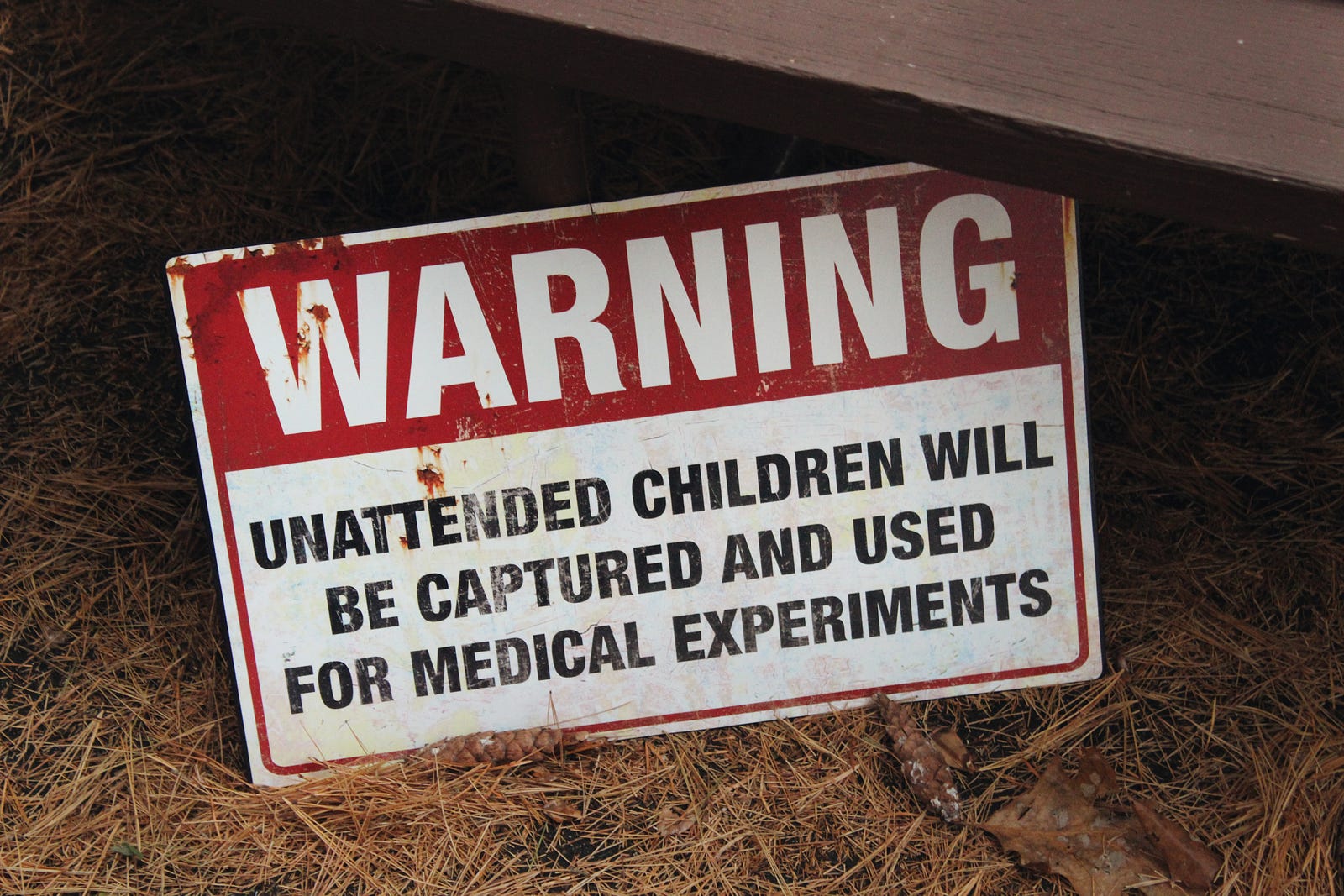The key to productivity and success is working out how to manage both

I was furious. I couldn’t believe what they said.
It was said with such certainty, ‘Oh no, that’s not what we are doing. You’ve got it wrong’.
I had notes from the customer meeting. I had written down the exact thing they had said and was working towards that goal. But for some reason that is not what we were doing. I was confused and angry with the whole team. The last five days of my work were wasted.
What did they really say?

I’m reminded of a story from Ryan Hawk on advice he received from his Father. Ryan was preparing for his first-ever paid public speaking engagement.
He rang his Father the night before and asked, ‘Dad, I am not sure which tie I should wear, and I’m still debating if this is the right shirt’. His Dad replied, ‘Ryan, it doesn’t matter — everyone in the audience is only thinking about what they’re wearing’.
This is the fundamental problem of a shared experience; a group briefing that is not quite as clear as it could be. Everyone is listening to the same information, at the same time, from the same person. But each person hears (or interprets) something slightly different.
Have you ever had this type of experience?
Imagine a group of you are all at the side of the dance floor at a wedding, you all see three people collide while dancing and crash into a table. Then, while the best-man was trying to help up one of the guests, he split his pants and had to duck walk out of the hall.
Later, as a group, you are recounting the event to the bride and groom. You all take turns emphasising one point or another, and when someone else says something, you’re like — I don’t even remember that happening!
It’s why Police like multiple witnesses interviewed separately, they are more likely to get the whole picture and be able to decipher the personal biases.
Imagine that you were in charge of moving a church from Europe that was to be disassembled and shipped to America to be re-assembled. Stone-by-stone you pull it down, ship it across, for someone else to rebuild…… That is what communication is like.
Your very complex thought is disassembled into chunks (words), and shipped through speech to someone else. They then have to re-build all of your words into your original thought. But they don’t really understand the shape of it (they cannot visualise your church), so they put it together as best as they can using whatever reference points they have.
They build their version of a church, their version of your communicated thought.
At the same time as they are catching and placing each stone of your complex thought, they are thinking about their dinner plans, that their shoes are too tight, that may be another cup of coffee wouldn’t be bad. Scratching away at an idea about where flies go to sleep, and why male dogs cock their legs but male cats don’t.
You can imagine that it would be difficult to assemble an old European church if the workers had never seen it before. And while they were working on the church, they were also building their own house for their family and drawing plans for tiny ladders so moths can escape from pools of water.
That is a conversation. It’s much more difficult than you thought right? You think sending it in email will help, it may a little, but they are still building their version of a church — not yours.
Because of this, problems arise.
I distil these into two categories of problem; relationships and scope — but at their heart, they are communication problems.

Relationships are hard
Relationships move at the speed of Vulnerability
Some relationships are easy, others seem really hard. In life, when those hard relationships become too much, we are allowed to walk away.
But what about at work, or in the most important relationships between family and loved ones. Walking away isn’t always the best option.
I’ll recount a talk I had with a friend about their boss. She was having troubles with feeling micro-managed. That her work was never quite good enough, and her boss always had to tweak something to make it better. It was making them feel disengaged from work, and that each hour at work felt like picking up needles with her feet. Sometimes it went okay, but eventually, you knew you were going to end up with tears in the corners of your eyes.
Despite having work colleagues to vent too, she still felt alone.
I asked her, ‘why does your boss work like this?’. After some mutterings about them being a variety of swear words, they landed on the fact that they didn’t really know.
I said to her, ‘don’t take this the wrong way, but how much does your boss trust you?’, this type of behaviour may not even be directly related to you, but the fact that they have built up a culture of distrust with their teams, or perhaps that they feel like their boss doesn’t trust them.
It’s time to let your boss know how it makes you feel, but you need to do it the right way. You need to do it with the right type of vulnerability. For it is with vulnerability, that you build trust.
Stephen M.R. Covey author of the book ‘The Speed of Trust’ says that trust impacts two key measurable factors; speed and cost. High trust relationships can move at a much higher speed, and with much lower verification cost due to the decrease in redundant ‘checking’ tasks.
Covey uses flight as an example;
After the 9/11 terrorist attacks, our trust and confidence in flying went down. So we took steps to prop it up. We increased security and beefed up all the procedures associated with flying. Those steps were helpful, but they came at a price. Travelling by air now takes longer and costs more. I used to be able to arrive at my home airport literally about a half hour before my flight. I could just cruise through security and get on the plane. Today, I have to arrive about an hour and a half before my flight because I never know quite how long it’s going to take me to get through security. I’m grateful for the security. It’s important. But it came at a price. We had to prop up the lack of trust. It took time, cost money.
For the normal workplace relationship, while this is a good demonstration of the benefit of trust, it is too large and complex to be a good example for my friend. So I asked her to remember back in time to a point where you asked someone if they wanted to check your work and they responded, ‘no, I trust you’ve got it’.
How did it make them feel? They responded that they went back and checked their work some more, corrected a few things, and sent it out. I asked them again, how did it make you feel? They thought for a bit and said, ‘valuable’.
This is what everyone wants to feel in a relationship. Valued.
So how do you improve relationships? In this, vulnerability is a super-power.
If you are a boss, you need to lead with trust. Trust begets trust. And to lead with trust you have to be prepared to be vulnerable. You cannot say that you trust someone, and not know that they then have the power to hurt you in some way. That is vulnerability. You have made yourself vulnerable to their errors or malice.
The best leaders, the best workers, and the people in the best relationships all understand this.
I said to my friend, you need to let your boss know how their actions make you feel, and then ask them what it would take to earn their trust. Perhaps they’ll say, just do better — suck less. But most often, that is not the case. They will offer a path forward, and then it is up to the both of you to walk it together.

Scope
There is nothing harder to pin down than a collective agreement on what you are trying to do. Companies throughout time have failure stories for when people couldn’t agree a problem scope.
If I were given one hour to save the planet, I would spend 59 minutes defining the problem and one minute resolving it — Albert Einstein
This advice is golden at the beginning of the process, or as I like to say “go slow to go fast”. But what about in the middle of a project when scope disconnects occur?
In my line of work, there are always contracts. These contracts do their best to define the expectations of a relationship and the key outcomes required — the scope. For our money, we expect this.
However, it rarely plays out as expected. There are always unforeseen issues, shifting requirements, changing stakeholders, changes to processes — that mean that at best, you are left following the intent of the contract rather than the detail of it.
When it comes to having conversations about the problems that have arisen, it generally comes down to scope. The best project managers always have this front of mind, and will regularly ask themselves ‘what is the real problem here?’.
Are we still solving the same problem? Have any of our assumptions at the project start been invalidated by recent changes? Do the people involved now, adequately understand the basis for the scope of work? Each of these questions examine the scope.
In my experience, even with the right people, there is tension between expected and perceived performance. It is only through truly understanding the scope that the disconnect can be examined and rectified.
Take my recent example trying to get people to do a survey at work. The survey was designed to be done by a selection of people at different levels of the organisation and across different teams. To do this I needed to consult with each of the team leads and explain to them why it was important their teams do this, instead of the jobs they were currently doing.
I met with resistance.
The team leads were protective of their peoples time and did not see the value in the survey. I had a problem. This may be one-part a relationship problem, but it certainly was a scope problem.
I was introducing some scope creep to their teams. They had customer-defined outputs and resources matched to those requirements. I was introducing something else.
My position — surely a 20-minute survey isn’t too much to ask. Their position — great, another survey on top of the mandatory training we had and the budget meetings we’re not getting anything done.
The scope of my survey was 20 minutes, the scope of the impact of that survey was much larger for them. We had a scope disconnect.
I needed to understand their scope and extend a path forward that meets both our requirements. One or both of us were going to have to compromise a little.
After some conversations about the importance of the survey, there was an agreement to extend the time the survey was open and allow the teams to pick their opportunity to complete the survey.
We had a mutual understanding of the scope.
Manage your relationships and scope

To get better at this, you need to be conscious of it and then be purposeful about managing it.
When a problem arises, it is always one of these two things; you either don’t understand each other well enough, or you don’t understand the problem well enough.
Understanding each other
How much you need to understand each other is often defined by your environment. Are you frequent collaborators in a small team? Are you colleagues with similar functions on different teams? Are you lovers? Are you teammates on a sporting team?
Each of these environments require different levels of understanding.
But each of them requires a relationship. Here are some tips to get to understand each other a little better no matter the environment;
- Make more big-talk. Big-talk explores some bigger questions, and is the opposite of small talk. Things like — what was your most transformative travel experience? Who would you swap places with for a day if you could? What is your strongest childhood memory? What is one professional skill you are working on at the moment? Of course, if you ask this question, you need to be ready to share your own answer. These types of questions explore the person, not their position in your life.
- Lead with trust. Talk about the things you are finding hard right now. Discuss what you are excited about. Let people know why. This is an extension of trust. All of these things could be used against you at some point. But you have to presume everyone has the best intentions to try their best at all times. Keep this faith. People will start to let you know what is happening in their head as well. This fills the trust marble jar a little more each time (do yourself a favour — read the link).
- Be generous as a default. If you choose to invest your most valuable resource, time, in someone else you are generous. If someone is having an issue, work with them. If someone is planning something important to them, see where you can help. It is those moments that build the foundation of trust and respect.
Understanding the problem
Scope is a fancy word for problem. You are scoping a problem, so how do you work out if you are working on the right problem, or even the same problem?
There are a few well laid out advice columns from project management experts, but I’ll talk about it at a smaller scale;
- SMART-O. In interacting with your boss or workers (1-up and 1-down), use SMART-O goals. People have written about SMART goals, the acronym stands for; specific, measurable, achievable, realistic and timely. If you can articulate and agree on a goal that addresses these 5 attributes, you have enough clarity that the goal is both achievable and you are working on what is required. I have added an O to the end. This stands for obstacles. When defining your goal, it is equally important to think about the obstacles you may face along the way.
- Be like a 3-year old. I remember a conversation about why we heated some food and ate some cold with my 3-year old. ‘Why does the pasta go in the microwave?’… To heat it up. ‘Why?’. Because warm pasta tastes better. ‘Why?’. I guess because it is less sticky in our mouth. ‘Why?’. Cold pasta tends to stick together and we want to mix it with other stuff. ‘Why?’. Because pasta is like playing tag, its better if there is more than one involved. This works at other problems too — its called the five-whys method. Your patience will be tested (mine was), but you’ll get the real reason.
- Define resources, constraints and assumptions. If you have a clearly articulated path, and you really understand why you are doing something. The last thing you need to do is work out who, with what and based on what assumptions will we be successful? This will take some time and is best done in a group — it will help remove your cognitive biases.
So, when you get to one of those conversations where you cannot understand why someone else thinks something different to you about the problem. Remember, you may have all heard something different. You may not understand each other well. And you may not be solving the same problem.
Work on those three things and no problem is insurmountable. Everything is a relationship and scope problem. If you establish the right relationships and have clarity on the scope, you will be able to work through everything else to success.
Your productivity and success is based on your ability to manage these two things.
I am a writer with a passion for leadership, growth and personal development. I try and create a spark, a little idea that nests inside and kindles your aspirations. Reach me at leonpurton.com